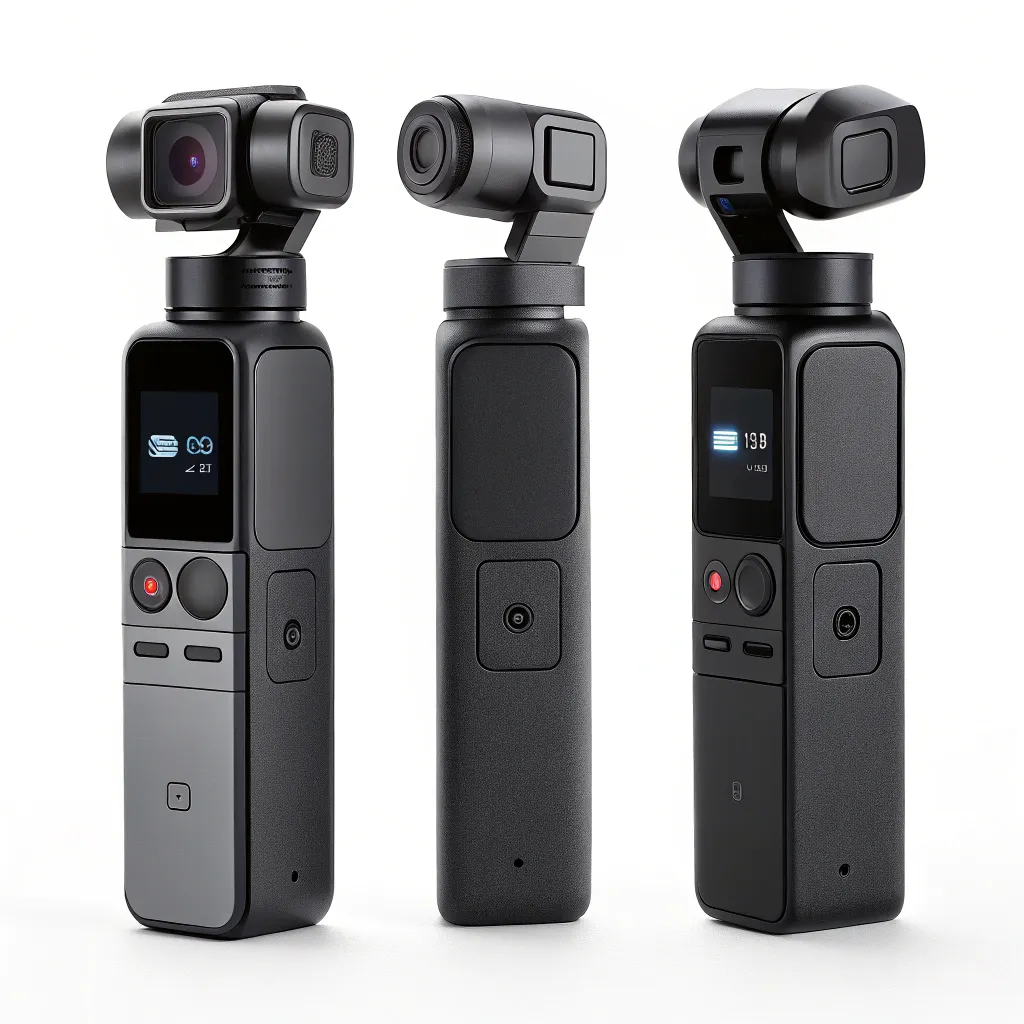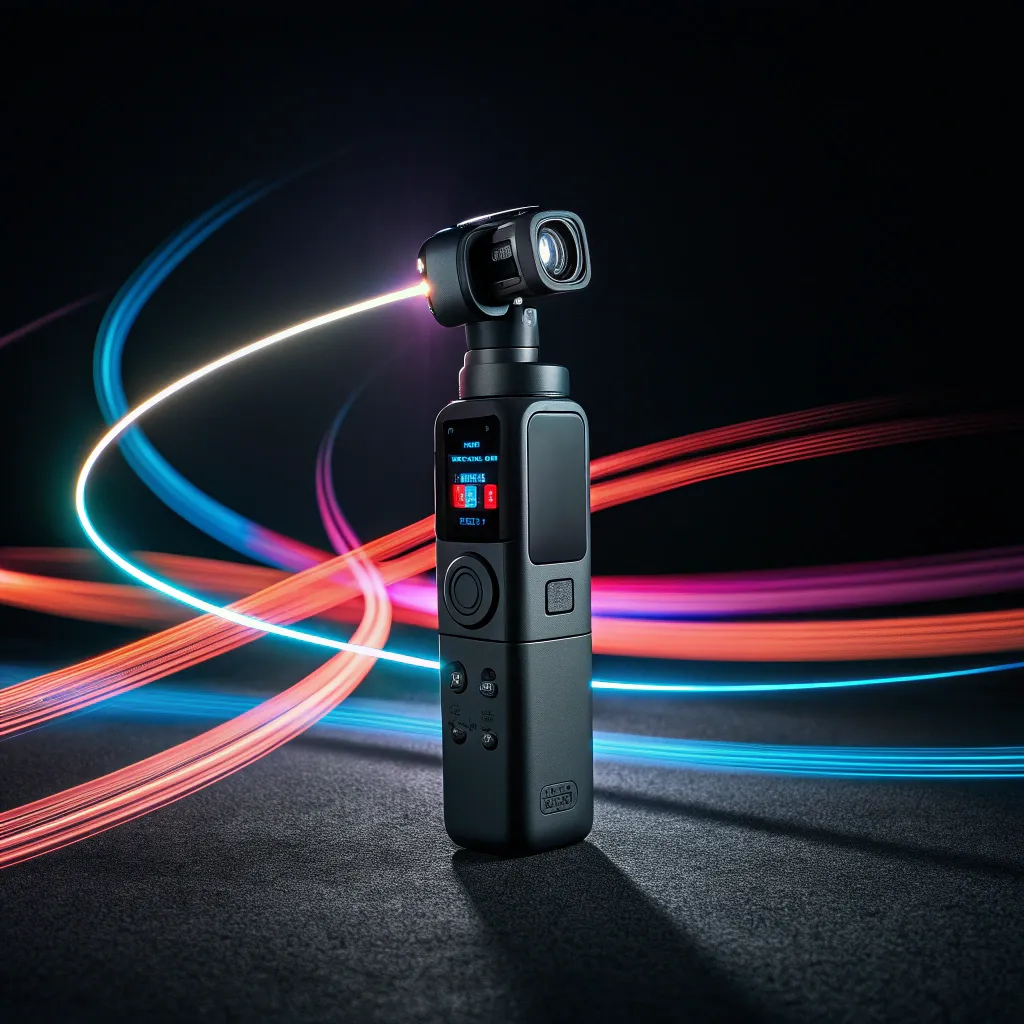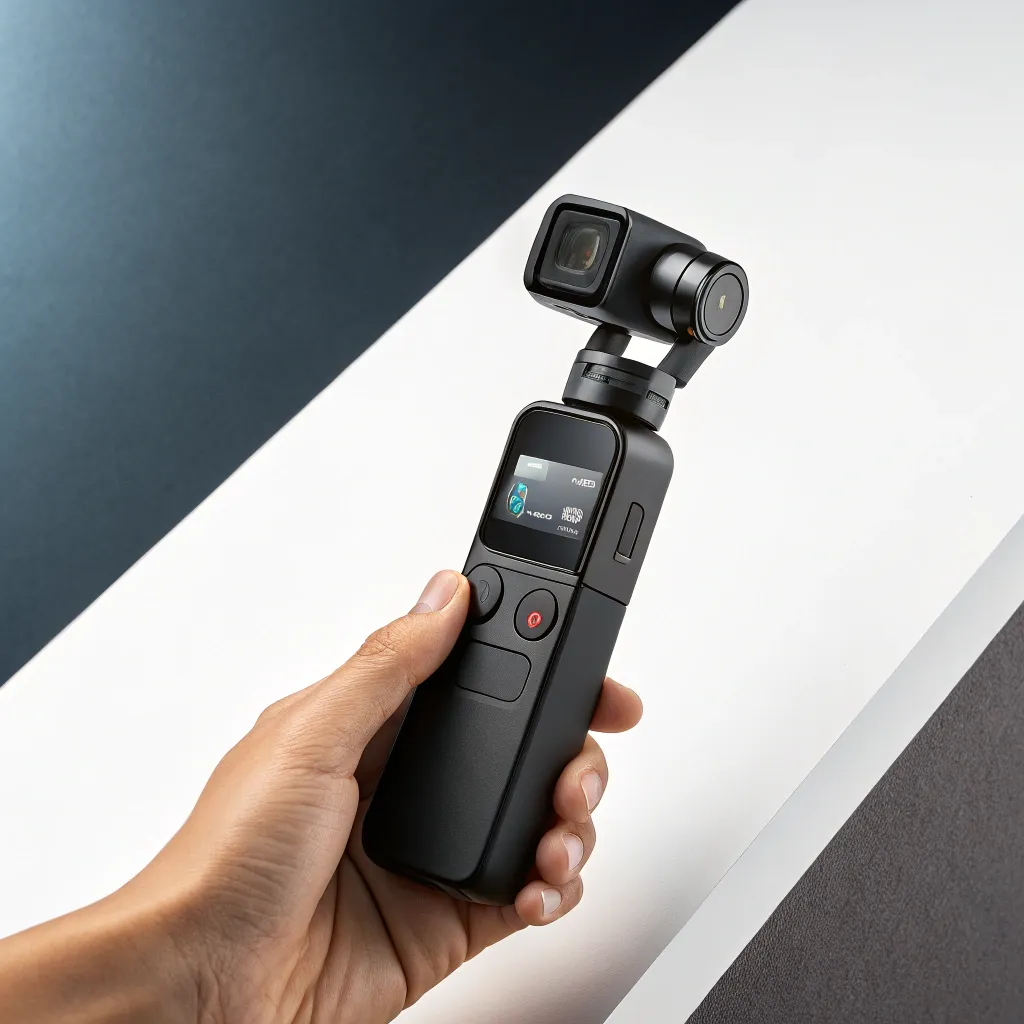DJI Osmo Pocket 4 Rumors: Dual Camera & 2025 Release Date

Is DJI’s Next Pocket Camera About to Revolutionize Content Creation Forever?
The content creation world is buzzing with anticipation as DJI Osmo Pocket 4 rumors continue to surface throughout 2025, promising groundbreaking features that could redefine handheld cinematography. With over 2.3 million Osmo Pocket units sold worldwide since the series launch, DJI’s compact camera line has become the go-to choice for creators seeking professional-quality footage in an ultra-portable package.
Recent industry leaks suggest the upcoming DJI Osmo Pocket 4 will feature a revolutionary dual-camera system, potentially partnering with Hasselblad for unprecedented image quality in a device smaller than your smartphone. But with conflicting reports about release dates ranging from late 2025 to early 2027, content creators are left wondering: should they upgrade their current setup or wait for this next-generation marvel?
This comprehensive analysis dives deep into every confirmed leak, industry insider report, and technical specification rumor surrounding the DJI Osmo Pocket 4. We’ll explore the potential game-changing features, realistic pricing expectations, and what these developments mean for the future of pocket-sized professional filmmaking.
Understanding the Current Handheld Camera Landscape
The handheld camera market has experienced explosive growth, with the global action camera segment alone reaching $4.2 billion in 2024. Content creators increasingly demand equipment that delivers professional results without the bulk of traditional cinema cameras, driving innovation in compact camera technology.
DJI’s dominance in this space stems from their ability to integrate advanced gimbal stabilization with professional-grade imaging capabilities in remarkably small form factors. The Osmo Pocket 3, released in late 2023, set new standards with its 1-inch CMOS sensor and 4K/120fps recording capabilities, but industry experts suggest the upcoming fourth generation will push boundaries even further.
The challenge facing manufacturers lies in balancing size constraints with performance demands. Modern content creators require multiple shooting modes, extended battery life, superior low-light performance, and seamless connectivity options—all within a device that fits comfortably in a pocket. This technological puzzle has led to significant innovations in sensor technology, image processing, and mechanical engineering.
Market research indicates that 73% of professional content creators prioritize portability without sacrificing image quality, while 68% express willingness to pay premium prices for devices that eliminate the need for multiple camera setups. These trends directly influence the DJI Osmo Pocket 4 specs currently in development.
Competition from companies like Sony, Canon, and emerging Chinese manufacturers has intensified, forcing DJI to innovate rapidly. The rumored dual-camera system represents a direct response to creator demands for versatility in a single device, potentially eliminating the need for lens changes or multiple camera angles during shoots.
The Complete Guide to DJI Osmo Pocket 4 Rumors
Revolutionary Dual-Camera System
The most compelling DJI Osmo Pocket 4 leak involves a groundbreaking dual-camera configuration that could transform how creators approach handheld filming. Industry sources suggest DJI is developing a system featuring both a primary wide-angle lens and a secondary ultra-wide or telephoto option, allowing instant perspective switching without physical camera movement.
This dual-camera approach addresses one of the most significant limitations of current pocket cameras: focal length versatility. Content creators often carry multiple devices or compromise on shot variety due to fixed lens systems. The rumored implementation would provide seamless transitions between different focal lengths, opening new creative possibilities for storytelling and cinematography.
Technical specifications suggest each camera sensor will feature independent image processing, enabling simultaneous recording at different focal lengths or advanced computational photography techniques. This could include real-time depth mapping for professional-quality portrait modes or enhanced stabilization through multi-sensor data fusion.
Hasselblad Partnership Speculation
Perhaps the most exciting DJI Pocket 4 Hasselblad rumors center around a potential collaboration between DJI and the legendary Swedish camera manufacturer. Following their successful partnership on drone cameras, industry insiders suggest Hasselblad’s color science and imaging expertise could elevate the Osmo Pocket 4’s image quality to new heights.
Hasselblad’s involvement would likely focus on color profiling, dynamic range optimization, and overall image processing algorithms. Their renowned Natural Color Solution (HNCS) technology has already proven successful in DJI’s Mavic series, delivering exceptional color accuracy and professional-grade image quality that rivals much larger camera systems.
If confirmed, this partnership could position the Osmo Pocket 4 price at a premium tier, potentially reaching $1,200-$1,500 for the top-tier model. However, the imaging quality improvements could justify the increased cost for professional users seeking the ultimate compact camera solution.
Advanced Stabilization and AI Features
Beyond hardware improvements, rumors suggest significant software enhancements powered by artificial intelligence. The potential integration of DJI’s latest AI tracking algorithms could provide unprecedented subject following capabilities, automatically adjusting focus, exposure, and framing based on scene analysis.
Predictive stabilization represents another rumored breakthrough, using AI to anticipate camera movements and preemptively adjust gimbal positioning for smoother footage. This technology could eliminate the subtle artifacts that occasionally appear in current gimbal systems, particularly during rapid directional changes or complex tracking shots.
Voice control capabilities may also expand significantly, allowing creators to adjust settings, start recording, or switch between camera modes using natural language commands. This hands-free operation could prove invaluable during interviews, vlogs, or situations where manual camera control isn’t practical.
Pro Tips for Maximizing Your Current Setup While Waiting
Optimizing Existing Osmo Pocket Performance
While awaiting the DJI Osmo Pocket 4 release date, creators can maximize their current equipment’s potential through advanced techniques and accessories. Professional colorists recommend shooting in DJI’s D-Log mode whenever possible, providing maximum flexibility during post-production color grading and exposure correction.
Manual focus control, often overlooked by casual users, can dramatically improve footage quality in challenging lighting conditions. Understanding focus peaking indicators and utilizing the DJI Mimo app’s advanced focus tools enables precise control over depth of field and subject isolation, rivaling much more expensive camera systems.
Third-party accessories have evolved significantly, with companies like PolarPro, Moment, and Freewell creating professional-grade filters, lenses, and mounting solutions specifically for Osmo Pocket cameras. ND filters remain essential for achieving cinematic motion blur, while polarizing filters can enhance contrast and reduce reflections in outdoor shooting scenarios.
Battery management strategies become crucial during extended shooting sessions. Professional users often carry 3-4 spare batteries and portable charging solutions, enabling continuous operation throughout full production days. USB-C power banks compatible with DJI’s charging protocols can provide emergency power during critical shooting moments.

Future-Proofing Your Content Creation Workflow
Investing in complementary equipment that will remain valuable regardless of camera upgrades ensures maximum return on investment. Professional-grade microphones, such as the Rode VideoMic series or Sennheiser wireless systems, significantly impact content quality and remain compatible across different camera platforms.
Lighting equipment represents another future-proof investment category. LED panels from Aputure, Godox, or Neewer provide consistent, controllable illumination that enhances any camera’s performance, particularly in challenging lighting environments where even the most advanced sensors struggle.
Post-production skills development often provides greater quality improvements than equipment upgrades. Mastering color grading in DaVinci Resolve, Adobe Premiere Pro, or Final Cut Pro can transform footage from any camera into professional-quality content. Online courses and tutorials specific to DJI footage optimization are readily available and highly recommended.
Release Date Analysis and Market Timing
Industry Release Pattern Analysis
Examining DJI’s historical release patterns provides insights into potential DJI Osmo Pocket 4 2025 timing. The original DJI Osmo Pocket launched in December 2018, followed by the Pocket 2 in October 2020 and Pocket 3 in October 2023. This roughly 2-3 year cycle suggests a 2025-2026 timeframe for the fourth generation.
However, recent supply chain disruptions and component shortages have affected the entire consumer electronics industry. Semiconductor availability, particularly for advanced image processors and sensors, continues challenging manufacturers worldwide. These factors could push the release date toward late 2025 or early 2026.
Market competition timing also influences release strategies. Sony’s latest compact camera announcements and Canon’s entry into the handheld gimbal market create pressure for DJI to maintain their technological leadership. This competitive landscape might accelerate development timelines or conversely, allow DJI additional time to ensure significant feature differentiation.
Pre-Launch Indicators to Watch
Several indicators typically precede DJI product launches by 3-6 months. FCC filings for new wireless communication capabilities often appear first, followed by component supplier leaks and manufacturing partner announcements. Social media activity from DJI executives and sponsored creator content usually intensifies 1-2 months before official announcements.
Patent filings provide another valuable insight source, though the timing between patent submissions and product releases can vary significantly. Recent DJI patents related to multi-camera systems and advanced stabilization mechanisms suggest active development in areas consistent with Osmo Pocket 4 rumors.
Industry trade shows, particularly NAB Show, IBC, and CES, traditionally serve as launch platforms for professional video equipment. DJI’s presence and announcement timing at these events could provide definitive release date clarity for eager consumers and professionals.
Pricing Predictions and Market Positioning
Competitive Analysis Framework
Current market positioning suggests the base Osmo Pocket 4 price will likely start around $799-$899, maintaining competitiveness with Sony’s RX0 series and Canon’s PowerShot offerings. Premium configurations featuring dual cameras and Hasselblad enhancements could reach $1,299-$1,499, positioning the device as a prosumer tool for serious content creators.
Bundle packages historically provide significant value for DJI customers, often including essential accessories like additional batteries, carrying cases, wireless modules, and memory cards. These comprehensive packages typically price 15-20% below individual component purchases, making them attractive options for new users entering the ecosystem.
Educational discounts and professional programs could extend availability to students and certified content creators at reduced pricing. DJI’s existing partnership with educational institutions and professional organizations suggests similar programs will continue with new product launches.
Long-term Value Considerations
The rapid evolution of camera technology raises important questions about long-term value retention. Previous Osmo Pocket models have maintained relatively strong resale values, typically retaining 60-70% of original pricing after 18 months. This trend suggests the Osmo Pocket 4 could represent a sound investment for professional users who regularly upgrade equipment.
Subscription services and ongoing software support increasingly influence total ownership costs. DJI’s cloud services, advanced editing features, and regular firmware updates provide ongoing value that extends beyond initial hardware capabilities. These services could become more integral to the overall product experience in future generations.
Conclusion: Preparing for the Next Evolution
The DJI Osmo Pocket 4 rumors paint an exciting picture of handheld camera evolution, with dual-camera systems and potential Hasselblad integration promising unprecedented capabilities in ultra-portable form factors. While definitive specifications and release dates remain unconfirmed, the consistent reports from multiple industry sources suggest significant innovations are indeed in development.
Content creators should consider their current equipment capabilities against anticipated production needs over the next 18-24 months. Those with recent Osmo Pocket 3 purchases may find their current setup adequate until clearer information emerges, while users of older generation devices might benefit from planning upgrade timelines around expected release windows.
The evolving landscape of content creation continues demanding more sophisticated tools in increasingly portable packages. Whether the Osmo Pocket 4 delivers on these rumored capabilities will ultimately determine its impact on the industry, but early indicators suggest DJI remains committed to pushing technological boundaries in pursuit of creator satisfaction.
Stay updated on the latest developments by following official DJI announcements, industry publications, and creator community discussions. The next evolution of pocket cinema is approaching, and preparation today ensures you’re ready to leverage tomorrow’s innovations.


